Trees Birds Mammals Fish Amphibians Reptiles
Wild Algarve
Bookshop
Lactarius vietus (Fr.) Fr. - Grey Milkcap
Phylum: Basidiomycota - Class: Agaricomycetes - Order: Russulales - Family: Russulaceae
Distribution - Taxonomic History - Etymology - Identification - Culinary Notes - Reference Sources

Lactarius vietus, commonly referred to as the Grey Milkcap, grows mainly under birch trees. It is not one of the milkcaps that turn up on most woodland forays, but in areas where it occurs it is usually quite plentiful and easy to find, despite its drab appearance.
Distribution
Common and widespread in Britain and Ireland, the Grey Milkcap is also found throughout much of mainland Europe in wet mossy woodland.
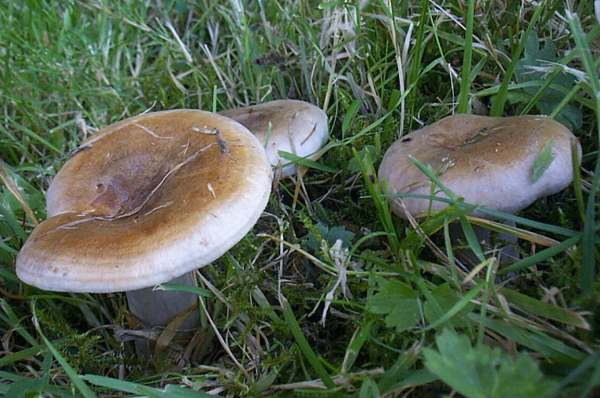
The range of this milkcap extends into eastern Asia, and a milkcap under the same scientific name is recorded also in parts of North America.
Taxonomic history
The Grey Milkcap was described in 1821 by the great Swedish mycologist Elias Magnus Fries, who gave it the binomial scientific name Agaricus vietus . (Most of the gilled mushrooms were included placed in the genus Agaricus, but the great majority of them have since been redistributed across several newer genera leaving just the 'true mushrooms' in a slimmed-down Agaricus genus.)
It was also Fries who, in 1838, transferred this woodland mushroom species to its present genus, thereby establishing its name as Lactarius vietus , which is still its generally-accepted scientific name today.
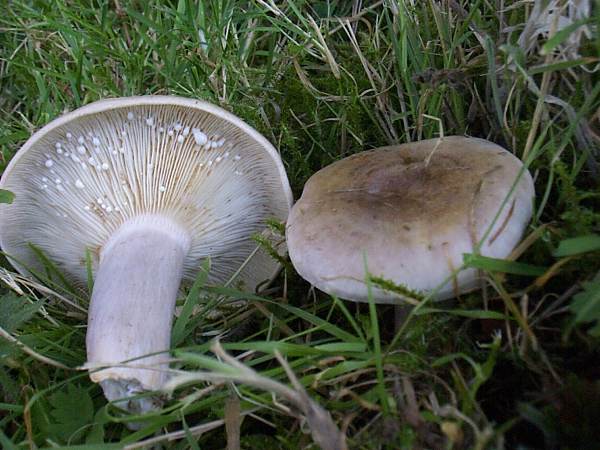
Synonyms of Lactarius vietus include Agaricus vietus Fr., Galorrheus vietus (Fr.) P.Kumm., Lactarius trivialis var. gracilis Peck, Lactarius varius Peck, Lactifluus varius (Peck) Kuntze, Lactifluus vietus (Fr.) Kuntze, Lactifluus parvus (Peck) Kuntze, Lactarius parvus Peck, Lactarius paludestris Britzelm., and Lactarius vietus var. paludestris (Britzelm.) Killerm.
Etymology
The generic name Lactarius means producing milk (lactating) - a reference to the milky latex that is exuded from the gills of milkcap fungi when they are cut or torn. The specific epithet vietus means shrunken or wrinkled.
Identification guide
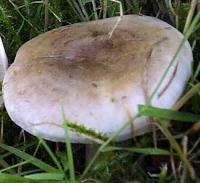 |
Cap
4 to 8cm in diameter, convex and then
centrally depressed, the caps are pale purplish-grey or buff-grey and
slimy when wet.
Beneath the cap cuticle, the flesh is white or pale buff and rather
brittle. |
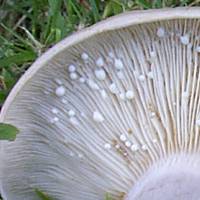 |
Gills
Adnate or very shortly decurrent, the crowded
gills are white or pale yellow, turning brown when bruised.
When damaged, the gills release white milk that dries smoke-grey on the
gills.
Stem
5 to 10mm in diameter and 5 to 7cm tall, the stems are smooth and
cylindrical; they are rather brittle and easily broken. |
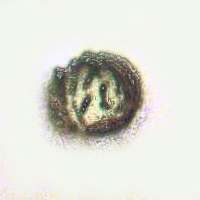 |
Spores
Subspherical to broadly ellipsoidal, 7-9.5 x 5.5-7.5 µm; ornamented withwarts and ridges up to 0.8um tall that form a partial and often well-developed closed mesh or reticulum.
Spore print
Pale cream, but rather variable in tone. |
Odour/taste |
No distinctive odour; hot and peppery taste. |
Habitat & Ecological role |
The Grey Milkcap is yet another of the milkcaps that form mycorrhizal associations with birch trees. It is
most commonly found in damp, shady places. |
Season |
August to October in Britain and Ireland. |
Occurrence |
Fairly frequent; often in quite large groups. |
Similar species |
Lactarius blennius is often a greeny-grey colour with a cap
banded by droplet-like blotches, and it is very slimy during wet weather. |
Culinary Notes
Some authorities suggest that this drab, gregarious mushroom is edible provided it is boiled thoroughly... and so is corrugated cardboard, but there are better treats to be had after a fungus foray. Please note also that some sources list this milkcap as inedible and possibly poisonous.
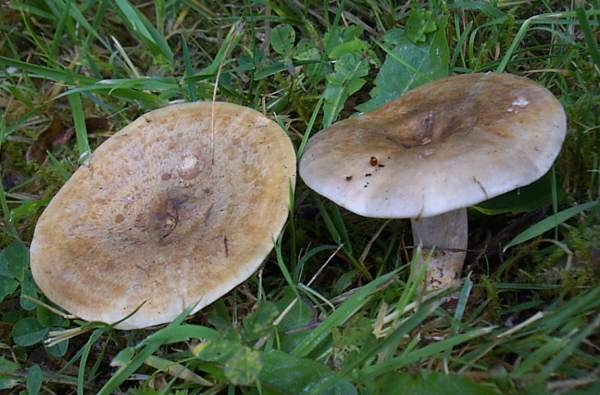
Reference Sources
Pat O'Reilly (2016). Fascinated by Fungi, First Nature Publishing
Jacob Heilmann-Clausen, Annemieke Verbeken, & Jan Vesterholt (1998). The Genus Lactarius (Fungi of Northern Europe—Vol. 2) The Danish Mycological Society.
Funga Nordica, Henning Knudsen and Jan Vesterholt, 2008.
Fungi of Switzerland, volume 6: Russulaceae, Kränzlin, F.
BMS List of English Names for Fungi.
Paul M. Kirk, Paul F. Cannon, David W. Minter and J. A. Stalpers. (2008). Dictionary of the Fungi; CABI.
Taxonomic history and synonym information on these pages is drawn from many sources but in particular from the British Mycological Society's GB Checklist of Fungi.
Top of page...
Fascinated by Fungi. Back by popular demand, Pat O'Reilly's best-selling 450-page hardback book is available now. The latest second edition was republished with a sparkling new cover design in September 2022 by Coch-y-Bonddu Books. Full details and copies are available from the publisher's online bookshop...